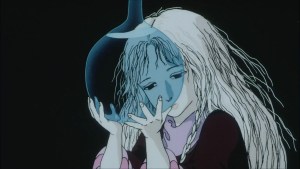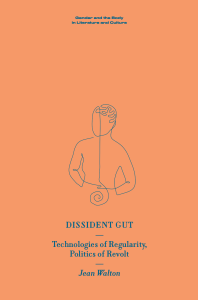Avril Tynan //
“Death is not an event in life,” wrote philosopher Ludwig Wittgenstein in the early 20th century, “We do not live to experience death” (6.4311). Of course, Wittgenstein could not know that 100 years later we would be living through a pandemic, but if Covid-19 has taught us anything, it is that death most certainly is an event in life.
20th-century critics of Wittgenstein embraced a broadly Levinasian turn towards an ethical and relational examination of death to highlight that death is omnipresent in life. The Franco-Spanish author Jorge Semprún, for example, reflecting on his own comrades’ deaths in Buchenwald during the Second World War, called Wittgenstein an “idiot” and suggested that his dictum be rephrased: “Mein Tod ist kein Ereignis meines Lebens. Meinen Tod erlebe ich nicht. C’est-à-dire, ma mort ne peut être un événement de ma vie, je ne vivrais pas ma mort” [That is to say, my death is not an event in my life, I will not live to experience my death] (66–70).
Recently, I was reminded of these conflicting observations on the phenomenon of death when I came across Hugo Simberg’s painting, Kuoleman puutarha, or The Garden of Death (1896). This 19th-century painting by Finnish symbolist Simberg is immediately striking: three cloaked grim-reaper figures wander the painting and tend to their thriving garden. The skeleton in the foreground holds a watering can while the figure in the centre of the painting appears to embrace a blue flower against her – would be – heart. The situation seems unlikely: figures of the afterlife are incompatible with the life suggested by a nursery of plants and flowers; why should the dead care if plants receive adequate water and light?
The stark contrast between life and death in the painting is enchanting. Interpretations of the work, which can be found in Tampere cathedral in Finland, suggest that the spiritual gardeners may have links to such Biblical sites as the Garden of Eden. Simberg himself noted that the image depicts a place of purgatory to which the dead go before they reach heaven (in Finnish). For me, however, this link between life and death in the painting is less apparently spiritual and more a genuine practical connection to a sense of cultivation that arises at the intersections of life and death. Might death nourish life in some way? I do not mean, of course, in the sense that is often associated with Wittgenstein and his solipsistic metaphysics in which death becomes the necessary condition of a meaningful life (i.e. how do we know life is life without death?) but rather in the sense that we might see death as linked to ongoing lives.
The moral philosopher Samuel Scheffler has described how our lives are always already entangled with the lives – and deaths – of many others, and our deaths will be no different, intertwined with the lives – and eventual deaths – of those who continue to exist after us. He argues that human beings naturally accept the notion of an “afterlife” not as the belief that we return from the dead or continue to exert conscious mental functions after our deaths but as the accepted knowledge that “other human beings will continue to live on after [our] own death” (131). Scheffler’s theory of the afterlife insists upon and defines the relationship between the living and the dead: the living and the dead do not inhabit different worlds but the same world in different times and spaces and, for Scheffler, this awareness is comforting rather than upsetting because it implicates us – even after death – in a “future that will unfold after one is gone” (142).
In a certain sense, it personalizes one’s relation to that future. Rather than looming simply as a blank eternity of nonexistence, the future can be conceptualized with reference to an ongoing social world in which one retains a social identity. One can imagine oneself into that world simply by imagining the resumption of one’s premortem relationships with people who will themselves continue to exist and to remember and care for one. […] The fact that there are other people who value their relations with you and who will continue to live after you have died makes it possible to feel that you have a place in the social world of the future even if, due to the inconvenient fact of your death, you will not actually be able to take advantage of it. (142–43)
Semprún’s reformulation of Wittgenstein’s dictum helps us to think about our actions today as the precursor for others’ choices, actions, and obligations in the future. Similarly, Simberg’s painting and the ongoing cultivation of life after death shows a continuity of human being that may inform morally significant behaviours. Although it is not possible to claim that a greater understanding of the way our lives continue to influence and impact upon the lives of future generations will actually make us act in altruistic, pro-social, or morally “good” ways, understanding that our pasts impact upon others’ futures is an important step in acknowledging and addressing how current political, environmental, and scientific decisions may have repercussions beyond our wildest dreams in a world that we will never know.
Image: Hugo Simberg, The Garden of Death [Kuoleman puutarha], 1896. Finnish National Gallery (CC).
Works cited
Scheffler, Samuel. 2013. “The Afterlife.” The Tanner Lectures on Human Values, Volume 32. Salt Lake City: U of Utah P. 131–181.
Semprún, Jorge. 1967. L’Évanouissement. Paris: Gallimard.
Wittgenstein, Ludwig. 1981. Tractatus Logico-Philosophicus [1921]. Translated by C. K. Ogden. London: Routledge.
Note: Some ideas in this post have been previously published in Tynan, Avril. 2018. “Winding Down, Living On: The Future in Old Age.” Storyworlds 10(1-2): 47–70. (DOI: 10.5250/storyworlds.10.1-2.0047)



